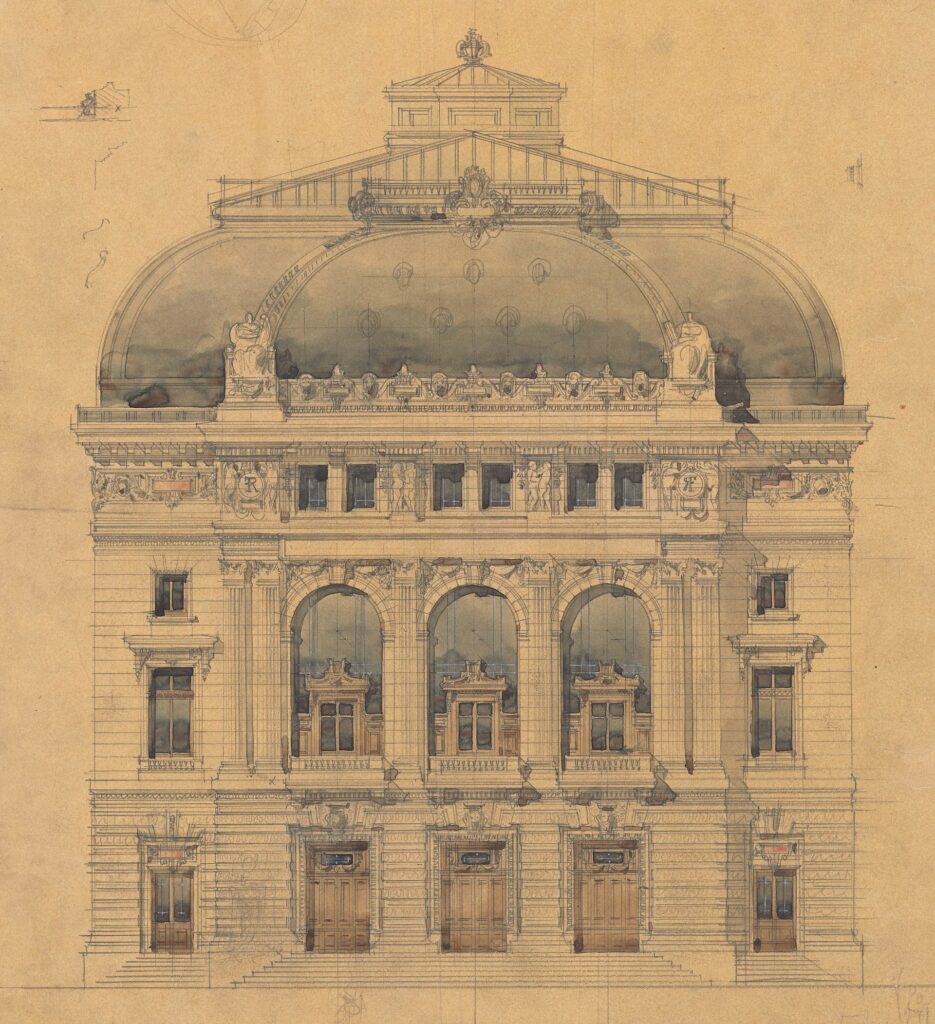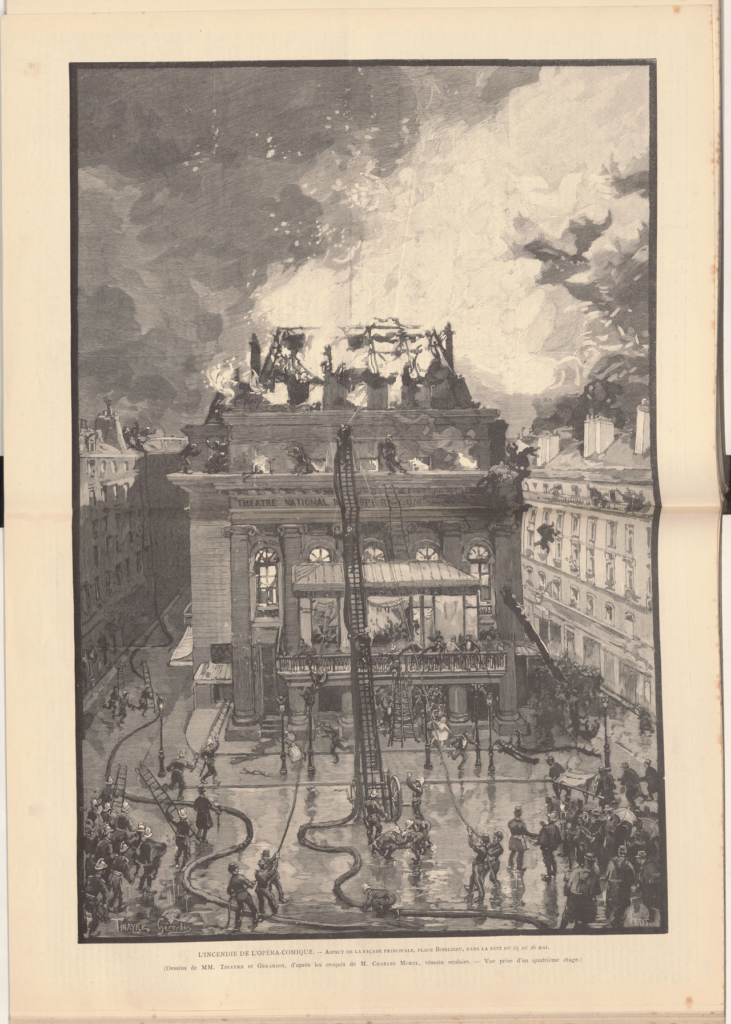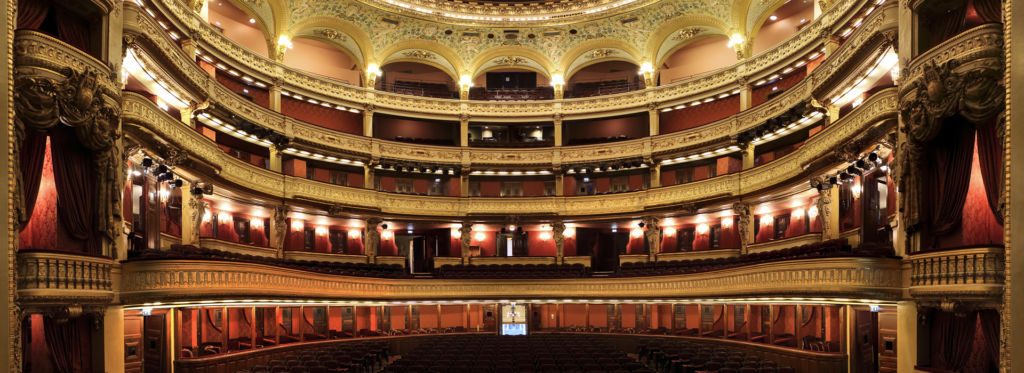How Can We Help?
Salle Favart (Théâtre de l’Opéra-Comique)

Address – Place Boïeldieu, 2nd arrondissement, Paris
Construction Dates – May 1893 – December 1898
Opening Date – 7 December 1898
Capacity – 1,200
Architect – Louis Bernier
The Salle Favart is a Paris opera house and theatre. As the current home to the Opéra-Comique, the opera house is officially known as Théâtre de l’Opéra-Comique. Constructed in a neo-Baroque style by architect Louis Bernier, the façade is reminiscent of Charles Garnier’s, Palais Garnier – the principal opera house in Paris which opened in 1875 and was the primary home of the Paris Opera and the associated Paris Opera Ballet. The Salle Favart is the third theatre with the same name built on the site.
The first theatre on the site had its first performance on 28 April 1783 and was designed by architect, Jean-François Heurtier. The theatre was used for a mixture of spoken word and music. During this time the theatre was used by the Opéra-Comique for a limited season between 1804 and 1805, the company would return to the Salle Favart during the second iteration of the theatre until the theatre was destroyed by fire and then returning in 1898 for the current theatre on the site.
The second Salle Favart was constructed by architect Théodore Charpentier and opened on 16 May 1840 and was in use until it was destroyed by fire on 25 May 1887. Following the fire a long deliberation regarding the future of the site took place. An architectural competition took place in 1892 and was judged by five previous winners of the Grand Prix de Rome (a notable scholarship for arts students). On the panel was Charles Garnier, the architect of the Palais Garnier, his role was to ensure the designs reflected academic and official tastes. As a consequence architects who more avant-garde in practice did not enter. The winner of the competition was Louis Bernier, who himself had won the Prix de Rome in 1872.

Designed by Bernier in the typical Beaux-Arts architecture style with a neo-Baroque façade which is reminiscent of Garnier’s Palais Garnier. It is unknown if this is due to the influence of Garnier as part of the architectural competition or instinct from Bernier. The auditorium had the traditional horseshoe shape with four levels of tiers. As a result of the fires in the previous theatres, the structure of the building was strengthened using an iron framework. This was becoming common practice at this time, however, Bernier concealed the frame in heavy stone for further strength.
The interior decoration received mixed criticism, with some claiming the decoration was frivolous and others stating it was in keeping with the operettas performed inside the auditorium.
The opera house was the setting of numerous premieres by notable French composers through the work of the Opéra-Comique. Works by Jules Massenet, Claude Debussy, Paul Dukas, Ernest Bloch, Maurice Ravel, and Francis Poulenc to name a few, were all premiered in the third iteration of the theatre.
The opera house was declared a monument historique (historic monument) in 1977, a designation is given to heritage sites of importance throughout France. The designation grants the opera house a degree of protection against development and demolition. The Salle Favat was designated to secure the architectural and historical cultural heritage of the building.

Sources/Images
Architect drawing of the façade of the Salle Favart by Louis Bernier, 1893. Available in the Gallica Digital Library, image in the public domain.
Engraving of the fire in the second Salle Favart originally published in Le Monde Illustré, 1887. Available in the Gallica Digital Library, image in the public domain.
Photograph of Salle Favarrt Auditorium by the Opéra-Comique. Image used with permission.
Mead, Christopher, Charles Garnier’s Paris Opera (Cambridge, MA: MIT Press, 1991).
Wild, Nicole and David Charlton, Théâtre de l’Opéra-Comique (Paris: Mardaga Pierre, 2005).
Contributor
Mark Scott